Signs of structural movement in brick walls after remodel
Signs of structural movement in a brick home can indicate underlying issues that need to be addressed promptly. Here are some common signs to look for:
Step Cracking: This type of cracking often occurs along mortar joints and appears like a staircase pattern. It's a clear indication of settling or shifting in the foundation or structural elements.
Diagonal Cracks: Cracks that appear diagonally across walls can be a sign of foundation movement or soil issues. These cracks often start at corners of windows or doors.
Horizontal Cracks: Horizontal cracks, especially those that run across the middle of walls, could be indicative of excessive pressure from the soil against the foundation or other structural problems.
Widening Cracks: Cracks that continue to widen over time can suggest ongoing movement. This could be due to factors like poor drainage, soil erosion, or foundation problems.
Doors and Windows Misalignment: Difficulty in opening or closing doors and windows, or visible gaps around frames, can be a result of shifting or settling foundations.
Uneven Floors: If you notice sloping or uneven floors, it might be due to foundation settlement or other structural issues.
Bowed Walls: When a wall curves inward or outward, it can be due to pressure from the soil, water damage, or other structural problems.
Cracks in the Foundation: Cracks in the foundation itself can indicate significant structural issues and should be addressed urgently.
The causes of step cracking and other structural movement in brick homes can be attributed to several factors:
Foundation Settlement: Poor soil compaction, changes in soil moisture content, and improper foundation construction can lead to settlement and movement.
Soil Shrinkage and Expansion: Changes in moisture content can cause soil to shrink or expand, putting pressure on the foundation and leading to movement.
Poor Drainage: Improper drainage can cause water to accumulate around the foundation, leading to erosion and potential foundation movement.
Earthquakes: Seismic activity can cause significant structural movement, including cracking in brick homes.
Tree Roots: Large tree roots near the foundation can exert pressure on the structure, leading to movement.
To correct step cracking and other structural movement, it's important to consult with a structural engineer or a qualified professional. The appropriate solution will depend on the underlying cause and severity of the issue. Possible corrective measures might include:
Foundation Repair: Depending on the extent of the issue, foundation repair methods like underpinning, helical piers, or slabjacking may be employed to stabilize the foundation.
Improving Drainage: Addressing drainage issues around the property can help prevent further soil movement. This might involve grading, installing gutters and downspouts, and ensuring proper drainage away from the foundation.
Soil Stabilization: Techniques like soil injection or grouting can stabilize the soil around the foundation and prevent further movement.
Brick Repointing: If the step cracking is due to minor settlement, repointing (replacing deteriorated mortar) might be sufficient to address the issue.
Remember, it's crucial to involve professionals who specialize in foundation and structural repairs to accurately diagnose the problem and recommend the appropriate solution. Ignoring structural issues can lead to more severe and costly problems down the line.
-
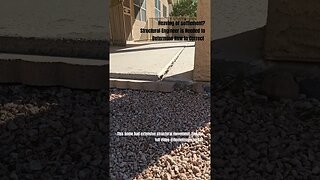 1:00
1:00
Home Inspector Dan
8 months agoHeaving or Settlement on a Home Inspection | Recommend Structural Engineer for Correction
11 -
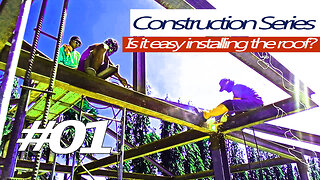 11:23
11:23
Contractor Construction Structural Engineer
1 year agoHouse Construction Early Stage for Roof Building
42 -
 13:00
13:00
Modern DIY Projects
2 years agoBuilding a Shipping Container Home | EP01Permits and Foundation Design
25.8K174 -
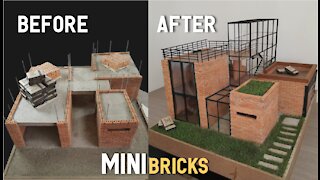 4:48
4:48
Studio Destto
3 years agoHOW TO MAKE A MINIATURE HOUSE WITH BRICKS - BRICKLAYING - MINI BRICKS - GLASS - STEEL - WALL - MODEL
197 -
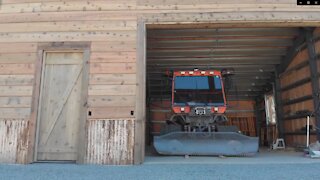 3:21
3:21
Great Western Building Systems
2 years agoErecting a Steel Building w/ Wood Siding - Great Western Steel Building Systems
158 -
 20:48
20:48
Models
9 months agoHow to make house bricks from notice board cork.
10 -
 4:15
4:15
FineTimer
1 year agoHomebuilding Tips from a Professional Builder
59 -
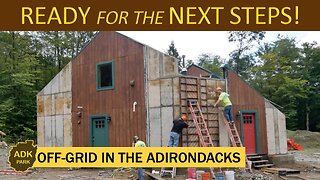 15:17
15:17
Creating A Simpler Life Off-Grid
10 months agoHUGE RETAINING WALLS FOR GREEN ROOF DOME HOME ARE DONE!
22 -
 8:02
8:02
Alixes
1 year ago2-Storey House Design Idea with 2 Bedrooms
18 -
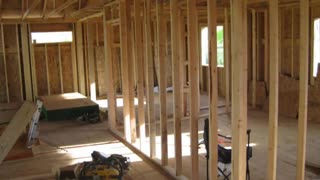 7:31
7:31
Life Enrichments
3 years agoWall Framing Strategies: Wall Corners
147